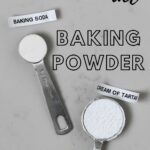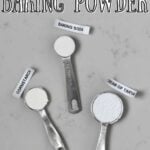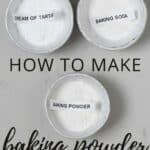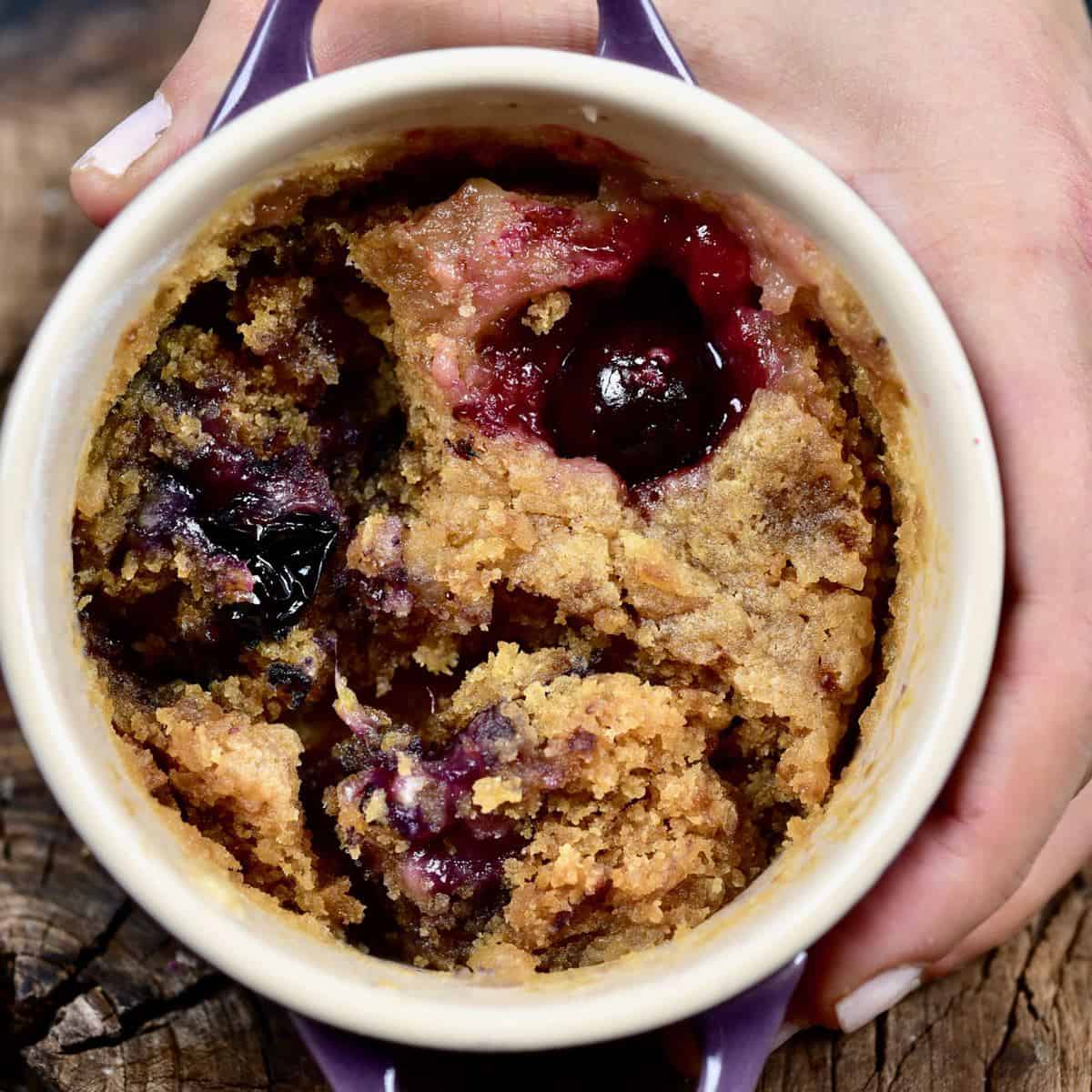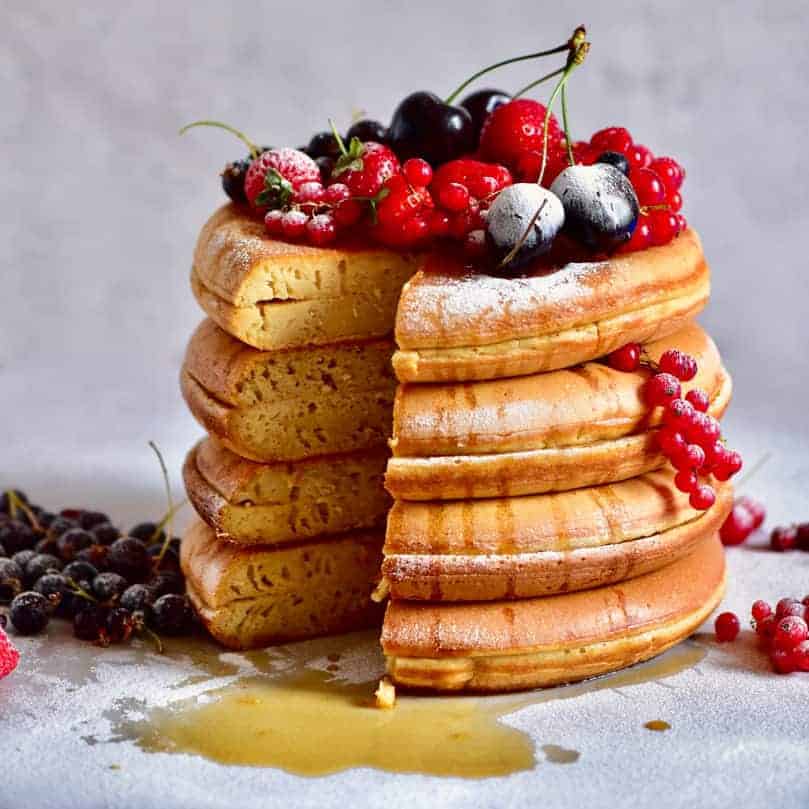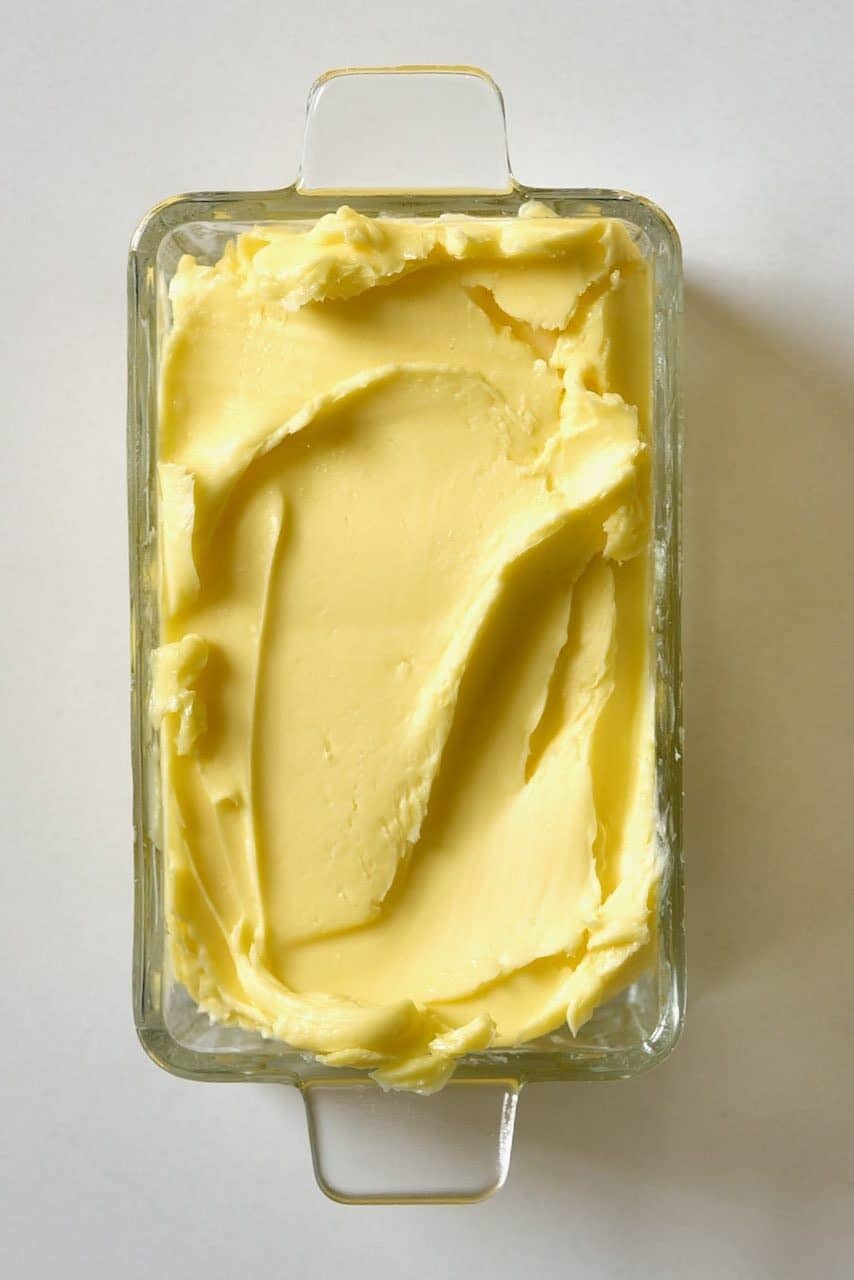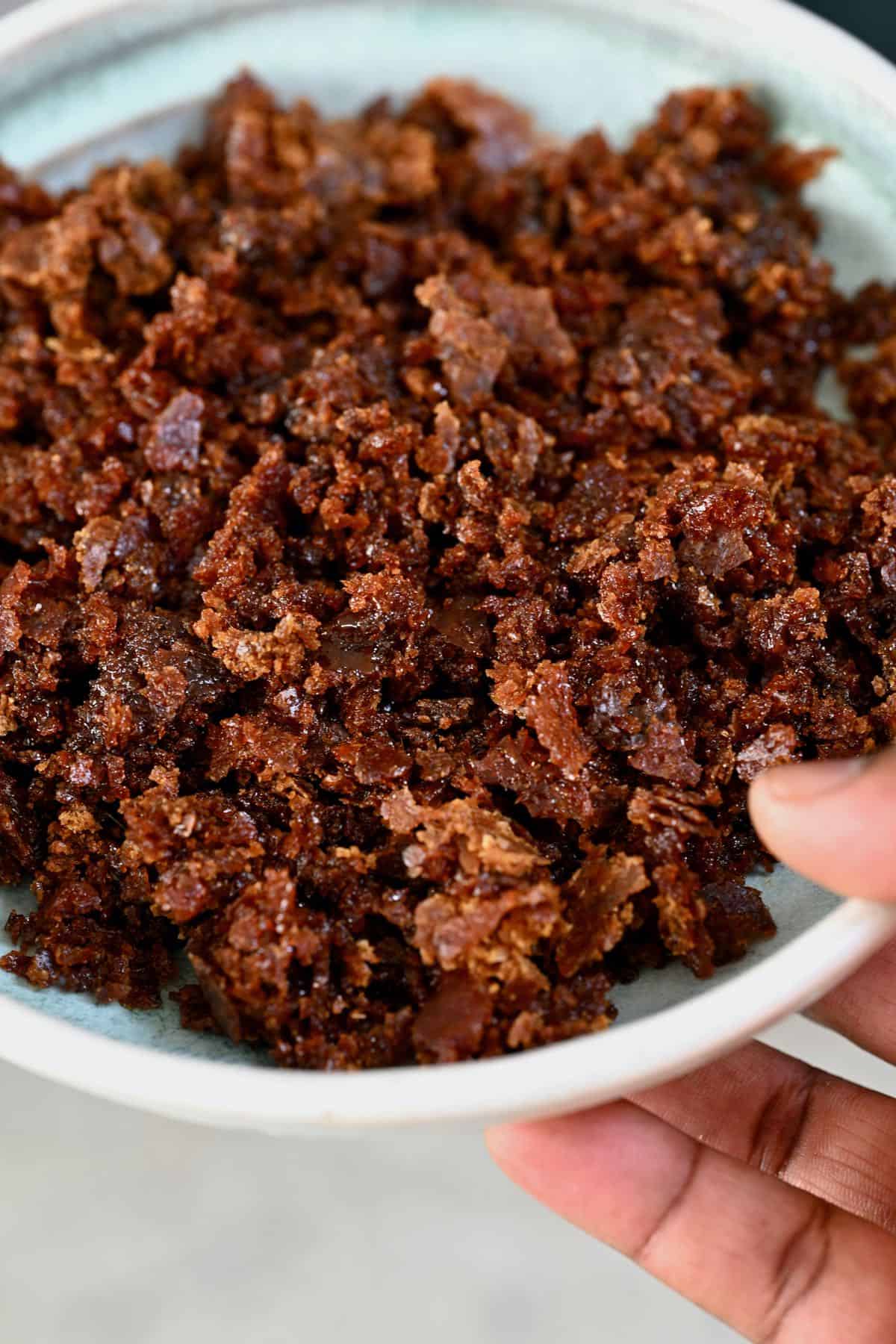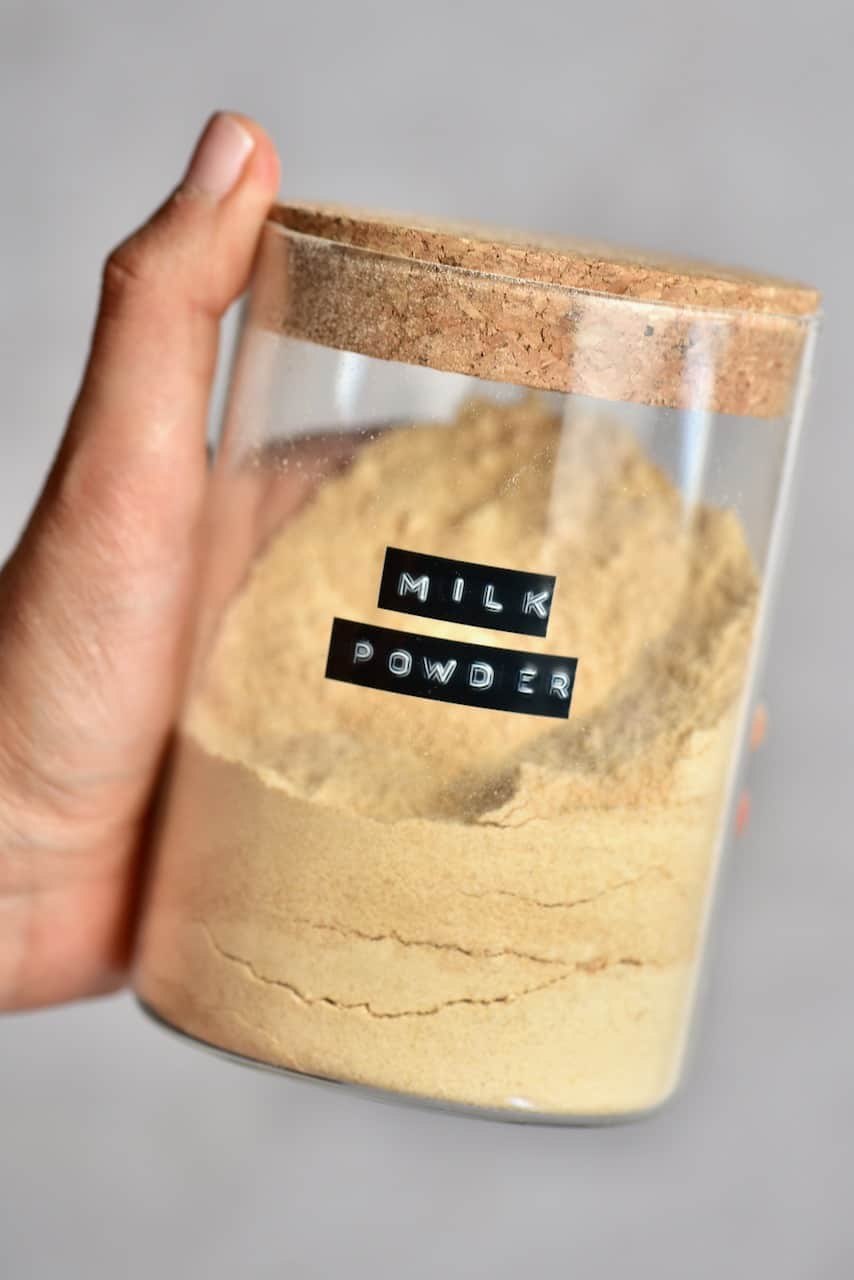This post may contain affiliate links. Please read our disclosure policy.
How to make baking powder at home with just a couple of ingredients and in 2 minutes! Plus, top tips, FAQs, and how to use this Baking Powder substitute!
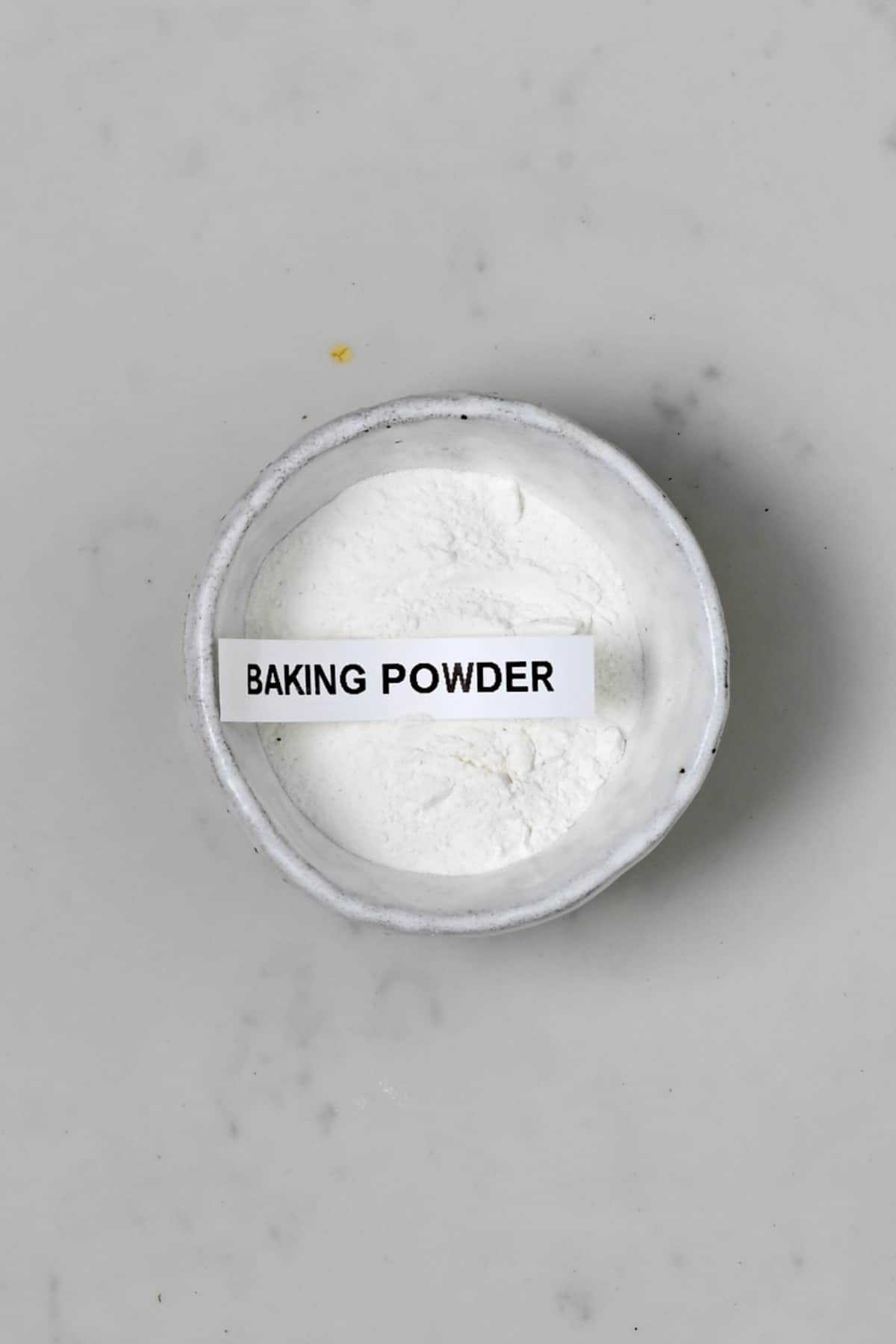
Right now, it’s Fall, and that usually means I turn to warming bakes that fill my house with all the best scents (I mean, cinnamon, nutmeg, and pumpkin spice?!). However, while things are slightly different this year, I managed to get one cake in last week before hopping on a plane to Lebanon (for a top priority project!), and promptly realized I’d run out of baking powder. Luckily, it’s super easy to pull together a substitute! So now I’m going to share how to make baking powder at home with just a couple of pantry ingredients (baking soda and cream of tartar) in no time at all!
I’ve already shared a beginner’s guide to baking powder vs. baking soda, which talks about the two products, when to use, FAQs, etc. However, I thought this baking powder substitute deserved a post of its own. I’ll admit up front that I haven’t replaced commercial baking powder entirely with homemade, thanks to the double-acting nature of most commercial versions that aren’t replicated at home.
Want to save this recipe?
Why Make it Homemade?
Like I just said, I don’t consider this a regular alternative. However, it’s SUPER handy to know this simple substitute for when you suddenly realize you either have none left or it’s expired. Plus, this homemade version is also aluminum-free (which also means no metallic taste), GMO-free (when using arrowroot or non-GMO cornstarch), and can be made corn-free!
So, let’s jump right into everything you need to know about this leavening agent: what it is, when to use it, how, and how to substitute it by making your own baking powder substitute!
What Is Baking Powder?
Baking powder is a leavening agent (aka raising agent) used in baking to provide lift and texture to baked goods (cakes, biscuits, bread, etc.)
Baking powder combines baking soda (an alkali) and cream of tartar (an acid). Commercial versions also often contain an anti-caking agent like cornstarch (or rice flour), which helps absorb moisture and stop the powder from clumping. In turn, this also helps to extend the shelf life of the product.
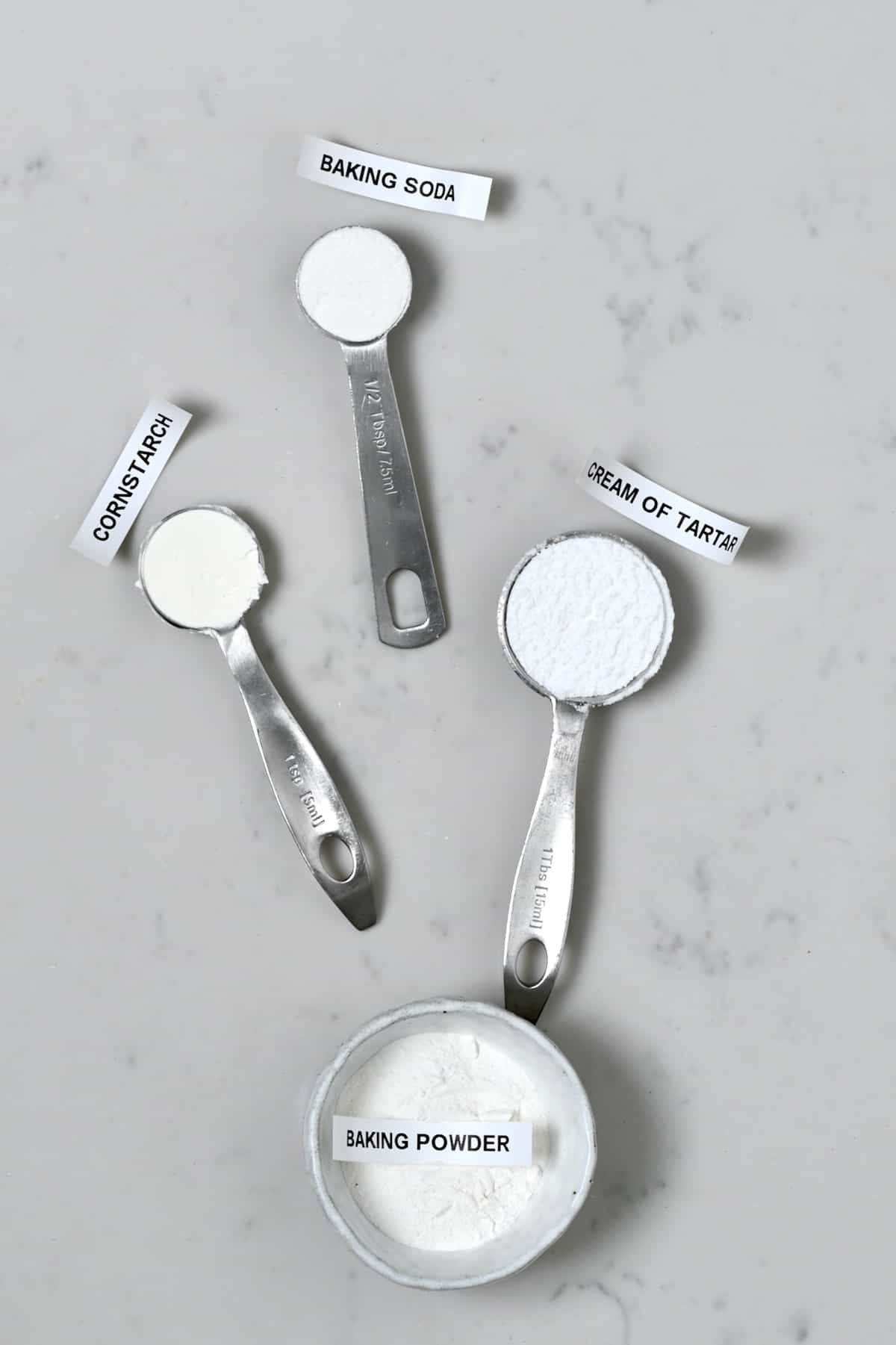
There are two types: the first is “single-acting baking powder” – which reacts to liquid and needs to be baked quickly to avoid losing the aerations. The second – “double-acting” or “slow-acting” baking powder – usually contains a second acid: phosphates (usually sodium aluminum sulfate and calcium acid phosphate) or uses an acid that reacts in two stages- one with liquid and one with heat.
Double-acting is the more forgiving of the two and is best for recipes where you rest/chill the batter/dough before baking. For example, when resting bread dough, etc. However, the single-actin powder is aluminum-free if that’s something you care about!
How does it work? Baking powder requires a liquid to activate it. Once activated, it will cause a chemical reaction that produces carbon dioxide (aka it bubbles up like mad!). These bubbles then help to create lift and texture in your wet batter by aerating it.
Commercially, most baking powders are also “double-acting.” Meaning they have a second, more slow-acting, reaction when heated in the oven as the initial chemicals break down into other ones (above 176ºF/80ºC). This prolonged/slow-acting reaction provides even fluffier results as the gas bubbles expand and cause the batter to rise.
How to make baking powder
Per one teaspoon of baking powder asked for in a recipe, you’ll need:
- Mix level 1/2 teaspoon cream of tartar and 1/4 level teaspoon bicarbonate of soda (baking soda).
- Optionally add 1/4 tsp cornstarch (or arrowroot powder) if you aren’t using it immediately to stop the two ingredients from reacting/clumping and extend the shelf-life.
To scale up the amount you make, remember the ratio: 2:1:1 (aka 2 parts cream of tartar for every one-part baking soda and optionally starch)
Note: the homemade substitute won’t be “double-acting,” so be quick to get it into the oven after adding it to your batter/dough.
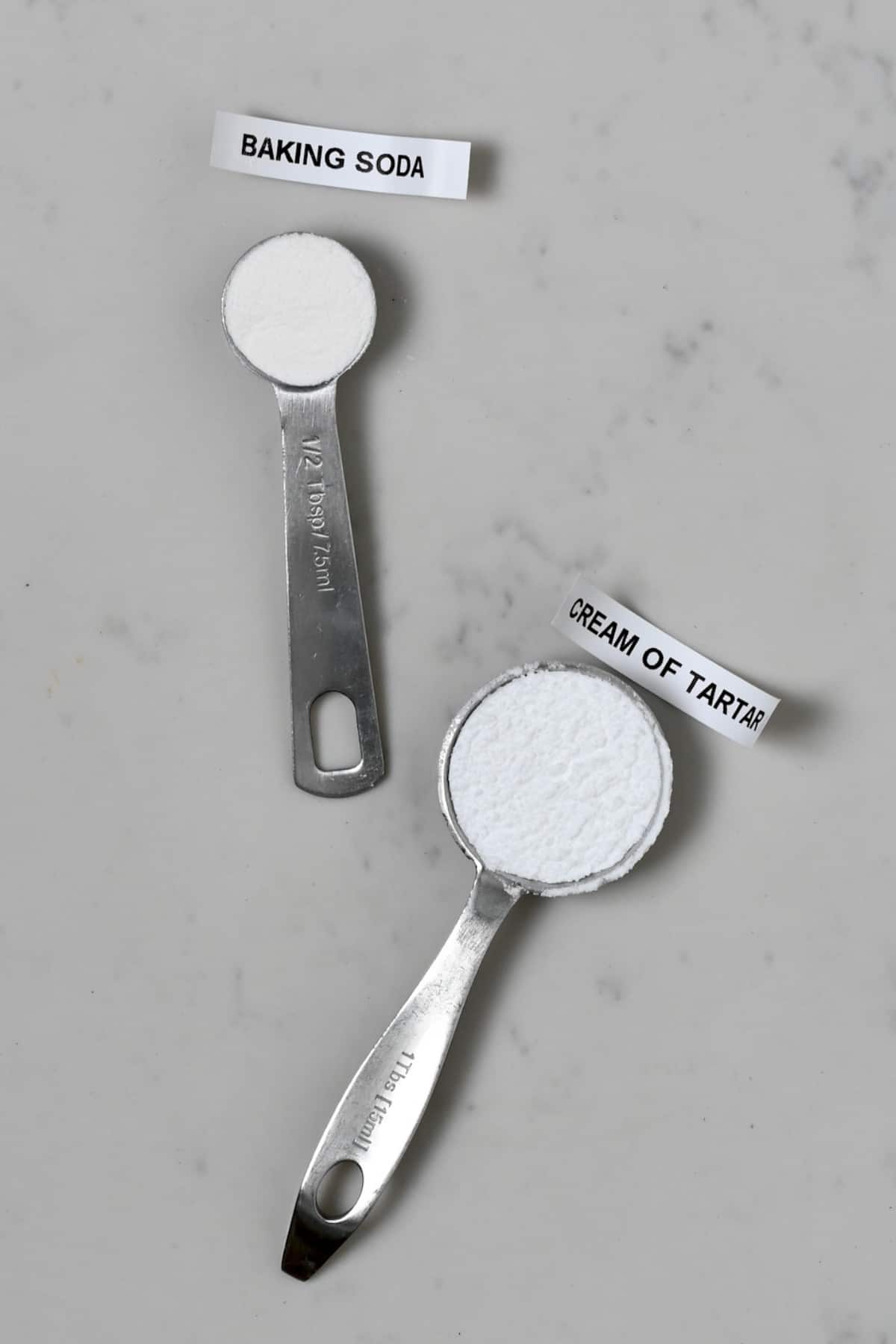
What if I don’t have cream of tartar?
Well then, did you know that you can achieve the same effect by combining baking soda with another acid. For example:
Instead of 1 teaspoon baking powder: use ¼ teaspoon baking soda + ½ cup buttermilk
Simply use the buttermilk in place of other liquids in the batter. Obviously, this method only works with recipes that contain lots of liquid in the batter.
When to use baking powder?
You can use baking powder in cakes, quick bread, pancakes, etc. Generally speaking, baking soda is used in recipes that also include an acidic ingredient (citrus – lemon juice, buttermilk, vinegar, etc.). In contrast, baking powder contains both and is used in recipes that don’t have an acid.
Top Tip: For that reason, it’s important to be aware of any ingredient substitutes you use when using leavening agents. For example, if you end up adding more acid to a recipe using baking powder, it can impact the balance of ingredients and affect the leavening.
Here are a few recipes to get you started.
- Blueberry Vegan Mug Cake
- One-Minute Vegan Chocolate Mug Cake
- Raspberry & Coconut Cake
- Fluffy Coconut Cream Cake
- Fluffy Japanese Style Pancakes
- Rainbow Mixed Vegetable Savory Cupcakes
How to Store
The most important thing when storing this leavening agent (commercial or homemade) is making sure it doesn’t come in contact with any moisture. To do so, keep it in an airtight container in a cool, dry place. I generally only make this homemade baking powder substitute in small batches and aim to use it within one month (in the meantime, I’ll buy some more double-acting stuff from the store!). However, it should last for months, if not years, when stored correctly.
How to Test Your Baking Powder
Unfortunately, this leavening agent will lose its potency over time – so it’s important to test it if you haven’t baked in a while. To do so is amazingly simple:
Combine one teaspoon of baking powder with 1/3 cup hot (not warm) water. If the mixture begins to fizz immediately, it’s still active.
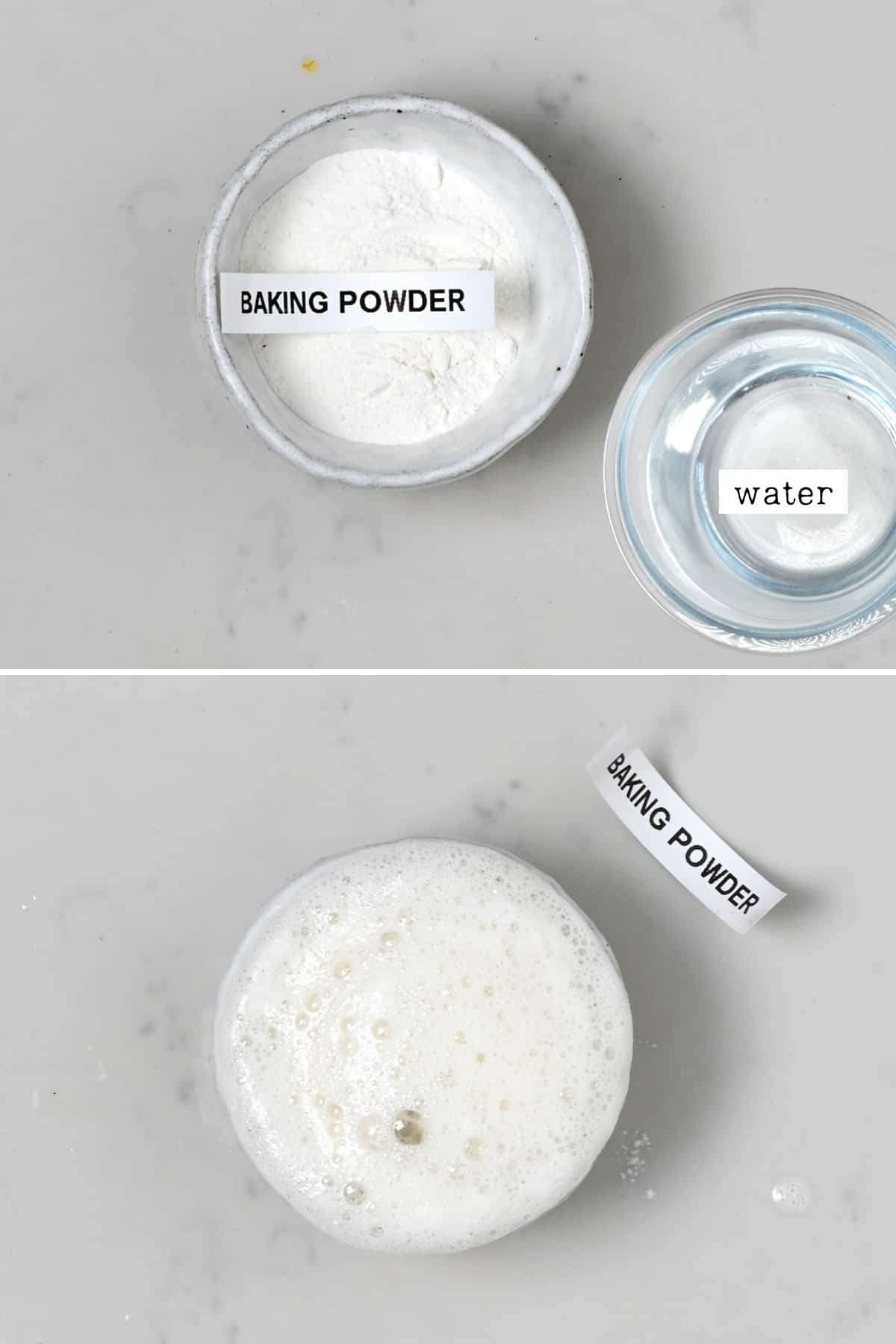
FAQs
Is Baking Powder the same as baking soda?
No, it’s not. You can read more about the differences between baking powder and baking soda here!
How much baking powder per one cup flour?
This can change based on the other ingredients within the recipe (how acidic the ingredients already are, for example). However, as a general rule:
- Use 1 tsp (5 grams) baking powder per 1 cup of flour
The general rule is around 3-5% of the weight of flour (i.e., 3-5g per 100g flour). However, be careful not to use too much as it can then cause your baked product to collapse! For that reason, I tend to rely on a maximum of 1 ¼ tsp per cup of all-purpose flour.
Bonus Tip: by combining 1 cup of plain flour with 2 teaspoons of baking powder, you will have homemade self-raising flour.
What happens if I add too much baking powder to a recipe?
Adding too much baking powder to a bake can cause structural and textural issues (random large holes, sinking, etc.) as well as flavors (a sour/bitter “chemical” flavor). In some cases, it can even cause your bake to collapse!
Can I fix my recipe if I’ve added too much baking powder?
If you realize just after adding the powder (before mixing), you can try to remove it. Likewise, if you know how much extra you added (i.e., accidentally added double), you could always double up the entire recipe rather than waste it (any excuse to eat more baked goods!).
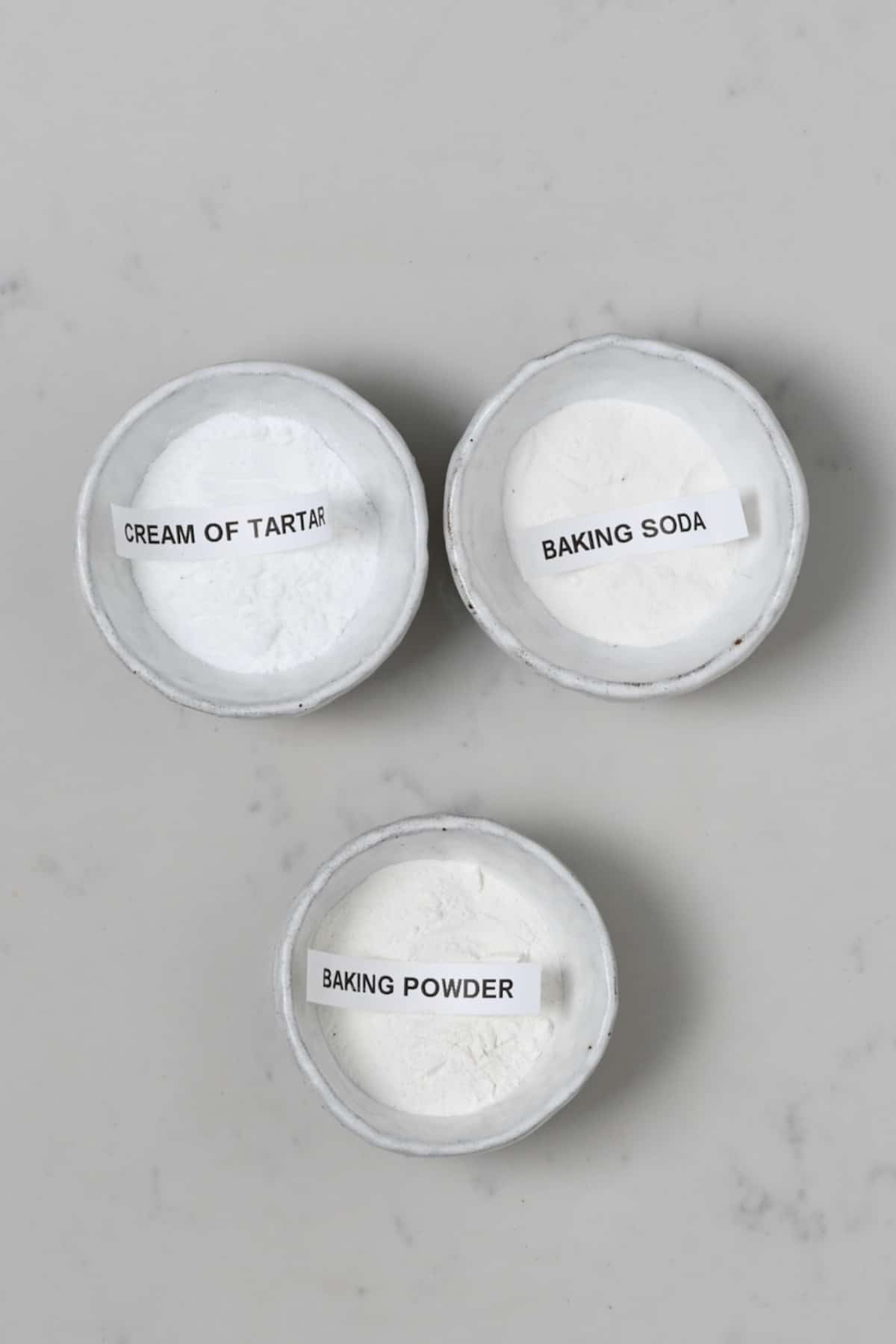
Baking Powder Substitutes
Substituting baking powder with baking soda is possible. Still, it can be a bit tricky since the baking powder is acidic, unlike baking soda, so you’d need to increase the acid in your recipe too.
However, you could also substitute baking powder by combining baking soda with another acid (buttermilk, yogurt, molasses). Click the link above for more info on substitutes for baking powder, including ratios of ingredients.
Is Baking Powder Gluten-Free?
Baking powder is naturally gluten-free when using cornstarch and arrowroot. However, some brands may use starches that contain gluten – so it’s worth checking the ingredients/labels or your starch container.
Recipe Notes and Top Tips
- When using single-acting baking powder: (aka homemade baking powder substitute) after adding into the recipe, mix carefully and then get your bake in the oven as soon as possible. The reaction will happen within minutes, and overbeating can cause the bubble to flatten.
- Buying cream of tartar: the truth is, this ingredient IS expensive and might be something you rarely use. However, it’s also important to note that it’s also an extremely shelf-stable product and, as long as you keep it appropriately stored and moisture-free, you can use it for years! So keeping a container handy for emergencies is great!
- High altitude baking: high altitude baking can affect the chemical reaction, so you’ll need less baking powder. This isn’t something I know enough about, though, to give exact details on reductions – but worth mentioning.
More Simple DIYs
- How to make butter with ONE ingredient
- How to make unrefined cane sugar (and Jaggery)
- Homemade simple syrup (refined and unrefined sugar)
- How to make powdered sugar (confectioners sugar)
- Homemade powdered milk
- How to make chocolate from cocoa beans
- How to Make Vital Wheat Gluten (and Wheat Flour Starch)
- How to Make Brown Sugar at Home?
If you try this homemade baking powder substitute method, I’d love to hear your thoughts/questions below. Also, I’d appreciate a recipe card rating below, and feel free to tag me in your recipe recreations on Instagram @Alphafoodie!
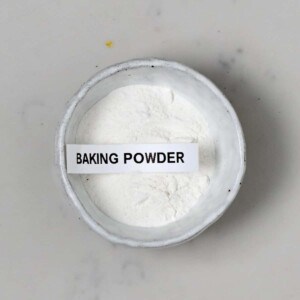
How to Make Baking Powder (From Baking Soda)
Ingredients
- 1 tsp cream of tartar
- 1/2 tsp baking soda
- 1/2 tsp cornstarch OR arrowroot powder optional, if you want to store the baking powder
To scale the amount: follow the ratio: 2:1:1 (2 parts cream of tartar for every part baking soda and optionally starch)
Instructions
- Per one teaspoon of baking powder asked for in a recipe, you’ll need: 1/2 teaspoon cream of tartar and 1/4 level teaspoon bicarbonate of soda (baking soda)
- Mix the cream of tartar and baking soda in a small bowl. Optionally add cornstarch (or arrowroot powder) if you aren't using it immediately to stop the two ingredients from reacting/clumping and to extend the shelf-life.
- Either use it immediately or transfer it to a small airtight container.Note: homemade baking powder substitute won't be "double-acting," so be quick to get your bake into the oven after adding the powder to your batter/dough.
What if I don't have cream of tartar?
- You can achieve the same effect by combining baking soda with another acid. For example:Instead of 1 teaspoon baking powder: use ¼ teaspoon baking soda + ½ cup buttermilk.Simply use the buttermilk in place of other liquids in the batter. Obviously, this method only works with recipes that contain lots of liquid in the batter.
Notes
- When using single-acting baking powder: (aka homemade baking powder substitute) after adding into the recipe, mix carefully and then get your bake in the oven as soon as possible. The reaction will happen within minutes, and overbeating can cause the bubble to flatten.
- Buying cream of tartar: the truth is, this ingredient IS expensive and might be something you rarely use. However, it’s also important to note that it’s also an extremely shelf-stable product and, as long as you keep it appropriately stored and moisture-free, you can use it for years! So keeping a container handy for emergencies is great!
- High altitude baking: high altitude baking can affect the baking powder reaction, so you’ll need less baking powder. This isn’t something I know enough about, though, to give exact details on reductions – but worth mentioning.
Nutrition
Nutrition information is automatically calculated, so should only be used as an approximation.

